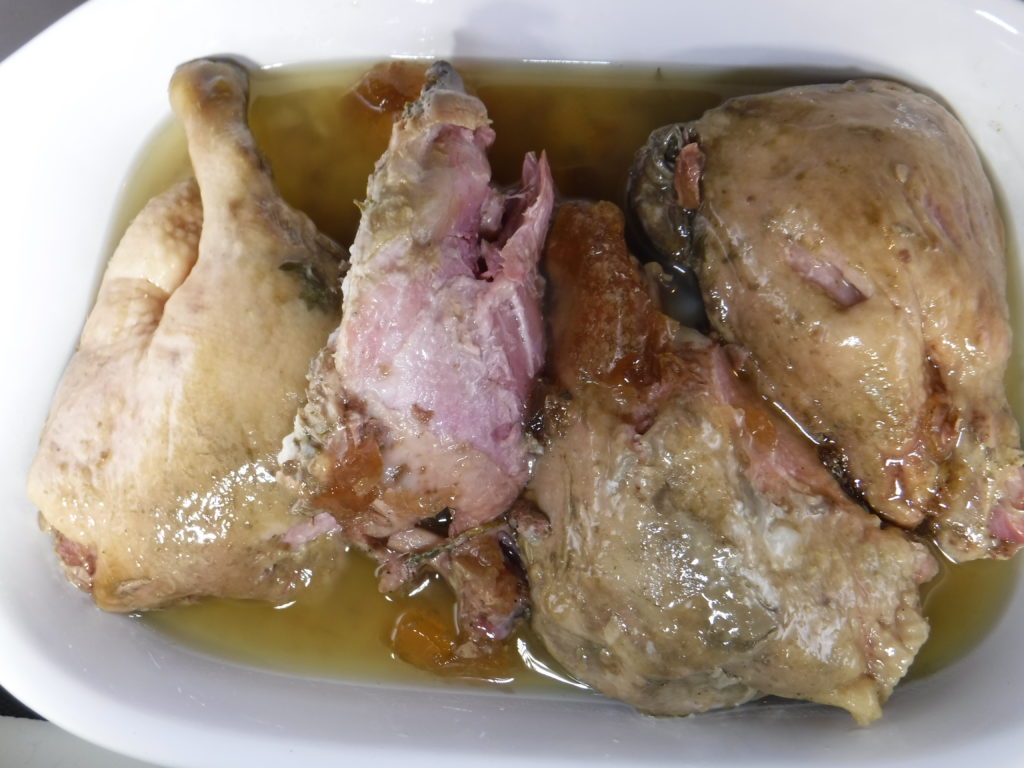
As discussed in a number of posts, I bought and cut apart two ducks, using them very completely, like a peasant would, wasting almost nothing. The 4 legs were turned into confit, which was very easy to do. The confit in turn was used as the key ingredient for a cassoulet. This is an adaptation from Serious Eats.
Confit is duck legs slowly cooked in duck fat, and the nice thing about sous-vide is that the legs themselves have enough fat that they can create their own duck fat bath in the close confines of a sous-vide bag. No extra duck fat is needed.
Since the sous-vide bag will be in the bath for 36 hours, it is important to make sure it is properly sealed. I tried to vacuum seal it, which is difficult for something as wet as raw duck legs. After 12 hours, I found that it was leaking, and I dried the edge of the bag and resealed it using the water displacement method (vs. the vacuum pump) to remove as much air as possible. The second sealing held for the remaining 24 hours of cooking.
4 duck legs
Kosher salt and freshly ground black pepper
4 medium garlic cloves, chopped
4 sprigs fresh thyme.
Season the duck legs with the salt and black pepper. Put them in a vacuum seal bag with the garlic and thyme. Seal carefully and put into a 155 degree water bath for 36 hours. Ensure that the legs are completely submerged. Check occasionally to see if the water needs to be topped up due to evaporation.
The cooked duck legs can be kept in the bag in the refrigerator for up to a week.
The duck legs can be used in cassoulet or for other purposes. They can be crisped by heating them skin-side up in a 450 degree oven until browned.
The duck fat in the bag can be separated from the duck meat juices and kept in the refrigerator as a cooking fat. Duck fat potatoes are famous these days.

